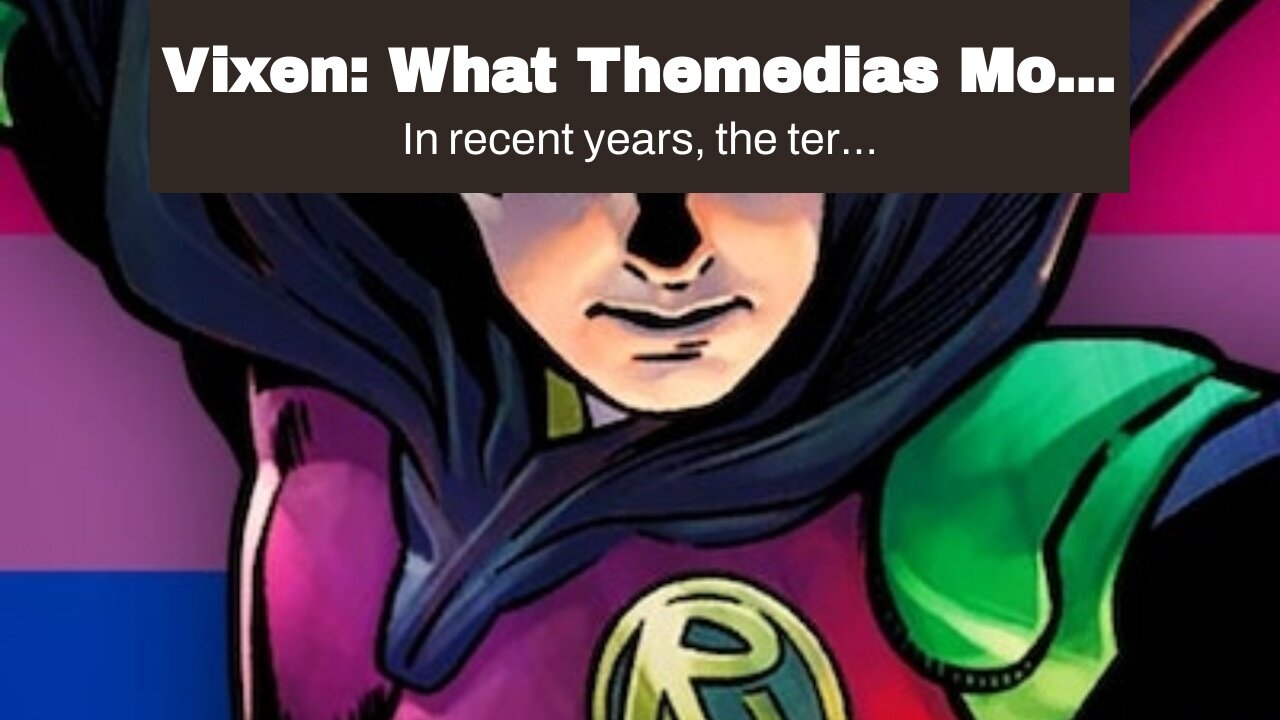Premium Only Content

Vixen: What Themedias Most Flawed Hero
Vixen: What Themedias Most Flawed Hero
In recent years, the term “vixen” has been used more frequently to describe a certain type of woman. But what exactly is a vixen? And where does this flawed hero come from? Let’s take a closer look. Photo by Henry Co. on Pexels What is a Vixen?
The etymology of the word.
The word “vixen” has its origins in Old English, from the Proto-Germanic *fiskaz (cf. West Frisian fieskje, Dutch vos, German Fuchs), which ultimately derives from the Proto-Indo-European root *puḱ- ‘blond hair’. The female fox was therefore called a vixen because of her blonde fur.
The definition of a...
https://finetimer.site/vixen-what-themedias-most-flawed-hero/
In recent years, the term “vixen” has been used more frequently to describe a certain type of woman. But what exactly is a vixen? And where does this flawed hero come from? Let’s take a closer look. Photo by Henry Co. on Pexels What is a Vixen?
The etymology of the word.
The word “vixen” has its origins in Old English, from the Proto-Germanic *fiskaz (cf. West Frisian fieskje, Dutch vos, German Fuchs), which ultimately derives from the Proto-Indo-European root *puḱ- ‘blond hair’. The female fox was therefore called a vixen because of her blonde fur.
The definition of a vixen.
A vixen is typically defined as a female fox, but can also refer to a malicious or scheming woman. In modern usage, it is often used as a term for an attractive woman with sex appeal.
The history of the Vixen.
The origins of the Vixen.
The Vixen first appeared in literature in the early 1600s. She was originally a fairy-tale character, appearing in stories and folklore from around the world. The Vixen was typically portrayed as a trickster figure, playing tricks on humans and other creatures. In some stories, she was also depicted as a dangerous creature, luring people into her traps.
Over time, the Vixen began to appear in more mainstream literature, such as novels and plays. She became a popular character in French farces and Italian commedia dell’arte. By the 18th century, she had become a stock character in English comedy, often appearing as a prostitute or mistress.
The Vixen also began to appear in more serious works of literature during the 18th century. In these works, she was often used as a symbol of sexual temptation or vice. For example, in Alexander Pope’s “The Rape of the Lock”, the Vixen is used to represent the dangers of female sexuality.
The development of the Vixen.
During the 19th century, the Vixen became increasingly associated with promiscuity and prostitution. This was partly due to the growing popularity of burlesque and music hall entertainments, which often featured vaudeville acts with raunchy jokes and risqué costumes.
As public attitudes towards sexuality began to change during the 20th century, so too did perceptions of the Vixen. She became less associated with vice and more with feminine empowerment and sexual liberation. In some cases, she even came to be seen as a positive role model for women.
The modern Vixen.
The media’s portrayal of the Vixen.
The modern vixen is often portrayed as a sexualized, powerful woman who uses her sexuality to get what she wants. She is often shown as being manipulative and calculating, using her looks and charms to get what she wants from men. While this portrayal can be empowering for some women, it also perpetuates the idea that women must use their sexuality to succeed. This is not only damaging to women’s self-esteem, but it also reinforces the notion that women are objects to be used by men.
The flaws of the Vixen.
While the Vixen may be a powerful figure, she is also often flawed. Her power comes from her sexuality, which can be a double-edged sword. On one hand, it gives her a great deal of control over men; on the other hand, it objectifies her and makes her a target for sexual violence. Additionally, the Vixen is often shown as being cold and calculating, lacking in empathy or compassion. This may make her seem unsympathetic or even heartless at times.
The Vixen is a flawed hero because she is portrayed as a sexual object by the media. The history of the Vixen shows that she was originally created as a strong, independent woman, but over time she has been sexualized and objectified. This portrayal of the Vixen is harmful because it reinforces the idea that women are objects for men’s pleasure.
Source: https://finetimer.site/vixen-what-themedias-most-flawed-hero/
-
 5:25
5:25
FineTimer
2 years agoThe Merit Circle: How to Get the Most Out of Your Teachers and Learning Opportunities!
643 -
 LIVE
LIVE
TimcastIRL
3 hours agoAirlines Cancel Over 700 Flights, Travel APOCALYPSE Is Now, Trump Says END FILIBUSTER | Timcast IRL
15,937 watching -
 DVR
DVR
Nerdrotic
5 hours ago $0.06 earnedHollywood REGRET | Disney's Predator | The Feminist Avengers - Friday Night Tights 379
10.4K8 -
 LIVE
LIVE
TheSaltyCracker
1 hour agoWoke is DEAD ReeEEStream 11-07-25
10,283 watching -
 41:20
41:20
MattMorseTV
2 hours ago🔴Schumer just BACKSTABBED his OWN VOTERS. 🔴
1.85K19 -
 57:44
57:44
Candace Show Podcast
2 hours agoBen Shapiro Is Crying Again. | Candace Ep 261
6.55K79 -
 1:03:44
1:03:44
BonginoReport
3 hours agoNew Yorkers Are Movin' Out - Nightly Scroll w/ Hayley Caronia (Ep.173) - 11/06/2025
89.1K50 -
 LIVE
LIVE
Dr Disrespect
10 hours ago🔴LIVE - DR DISRESPECT - ARC RAIDERS - AGAINST ALL DANGER
1,323 watching -
 1:21:57
1:21:57
Roseanne Barr
21 hours ago“Central Banking: The Hidden Empire” W/ Mel K | The Rosenne Barr Podcast #122
122K102 -
 LIVE
LIVE
SpartakusLIVE
8 hours agoTOXIC Solos on ARC Raiders || Friday Night HYPE - WZ or Redsec Later?
166 watching